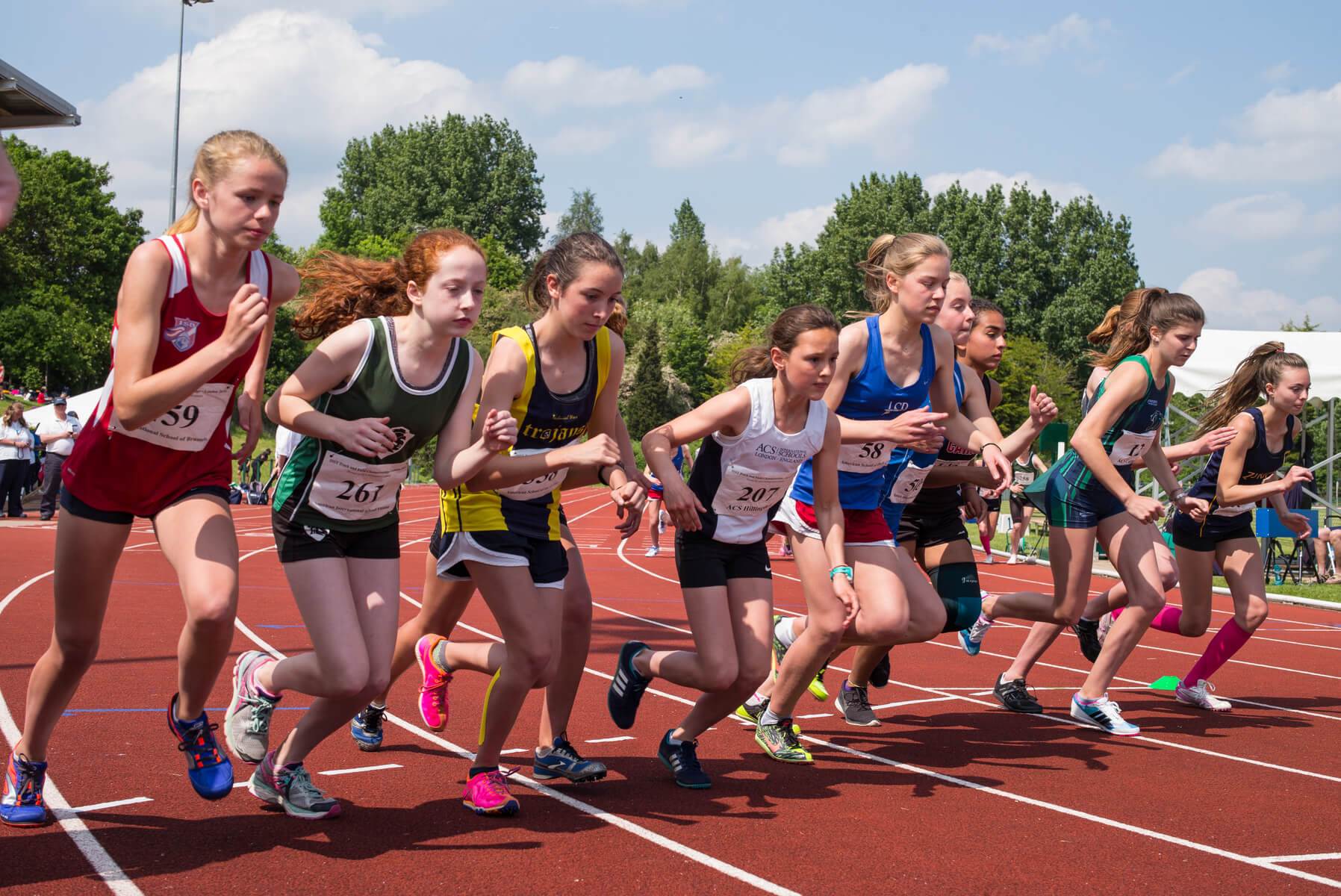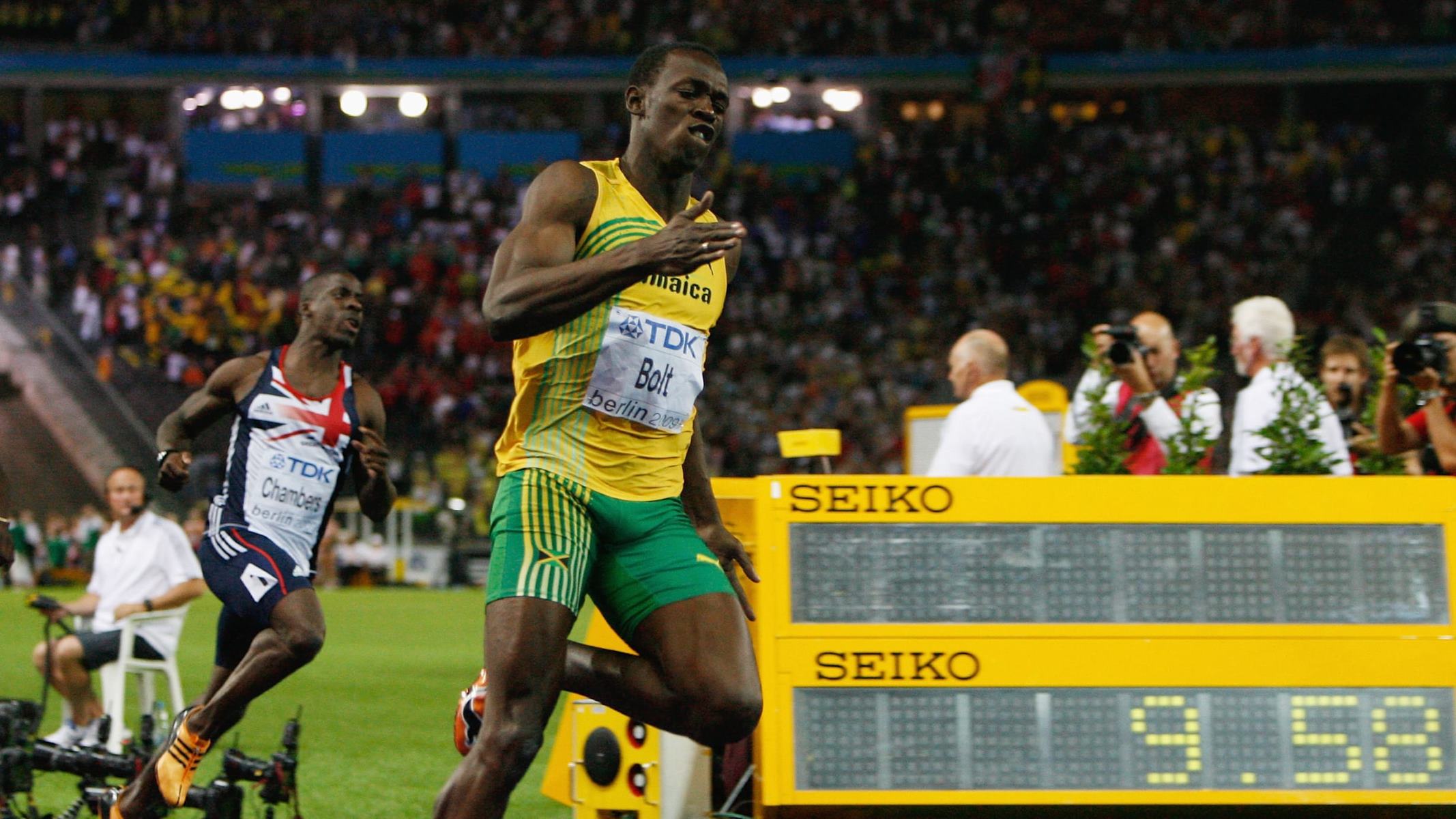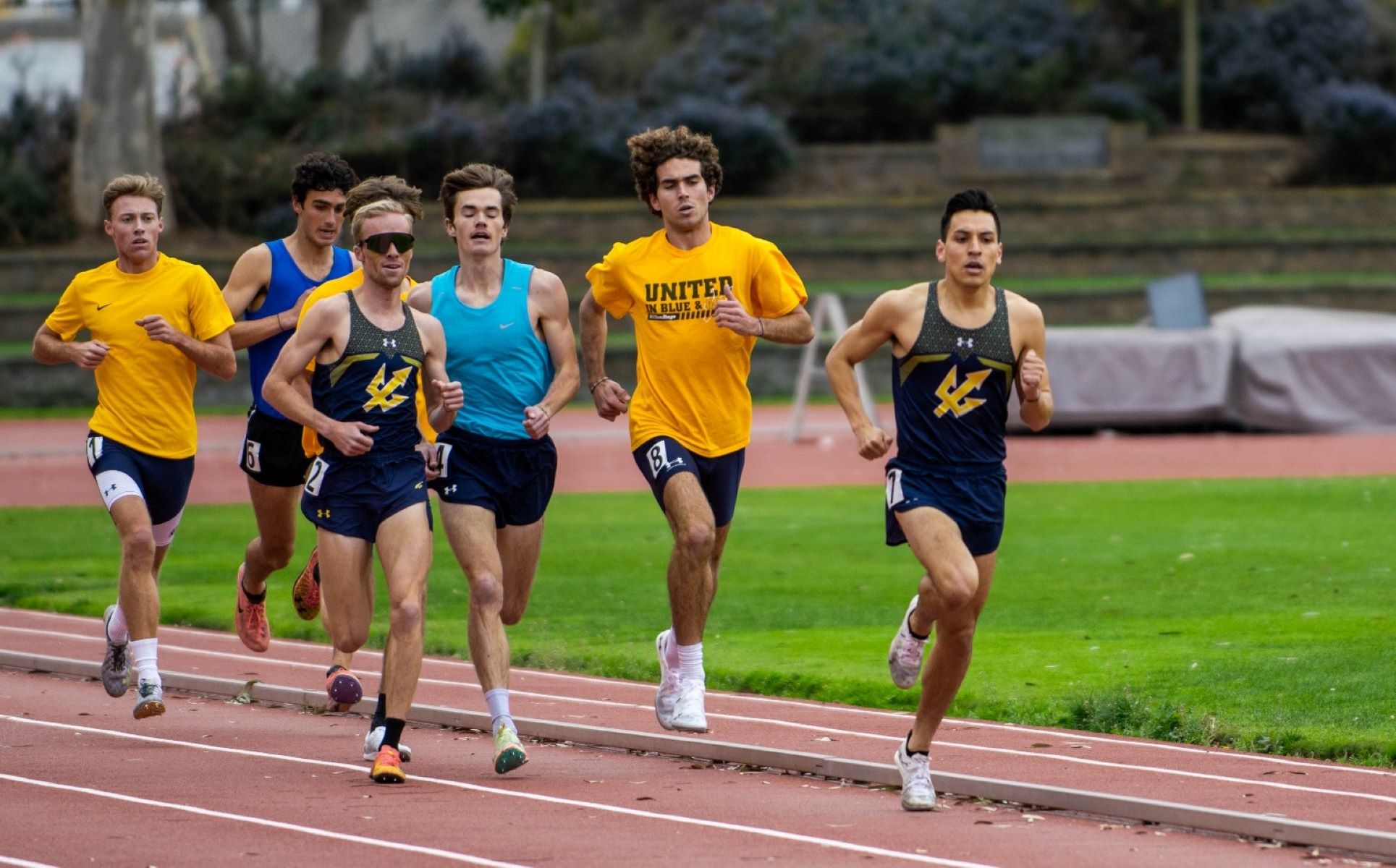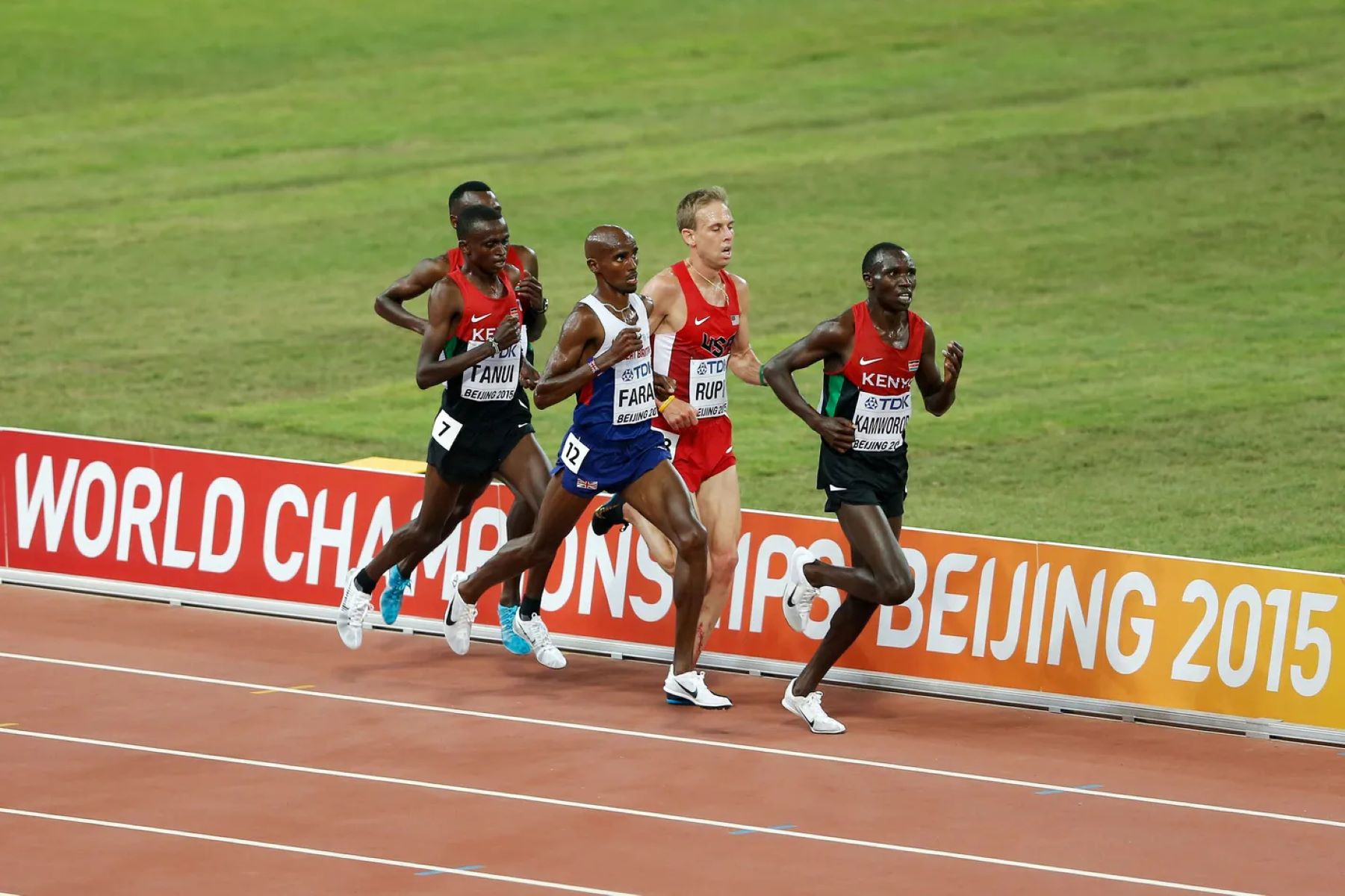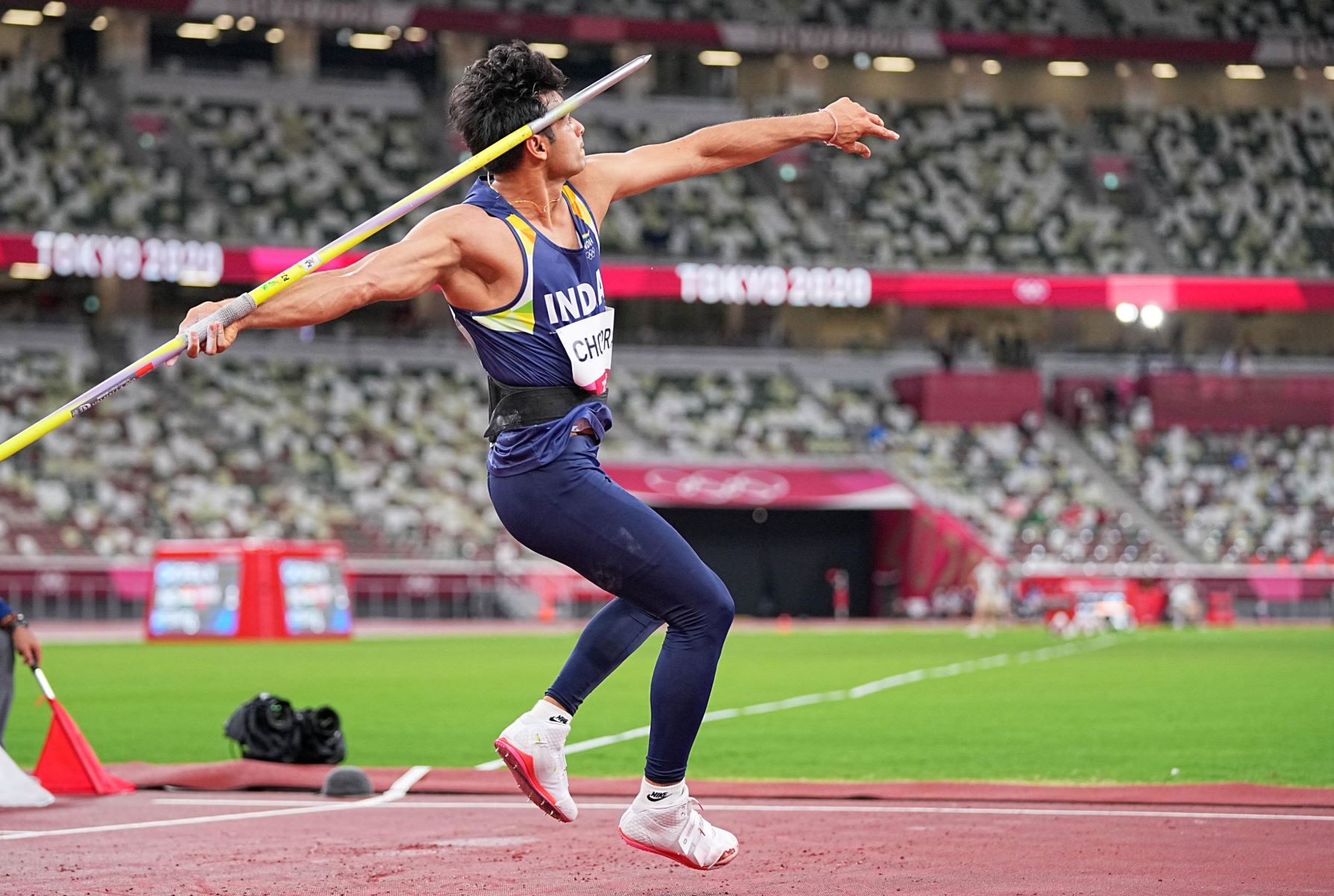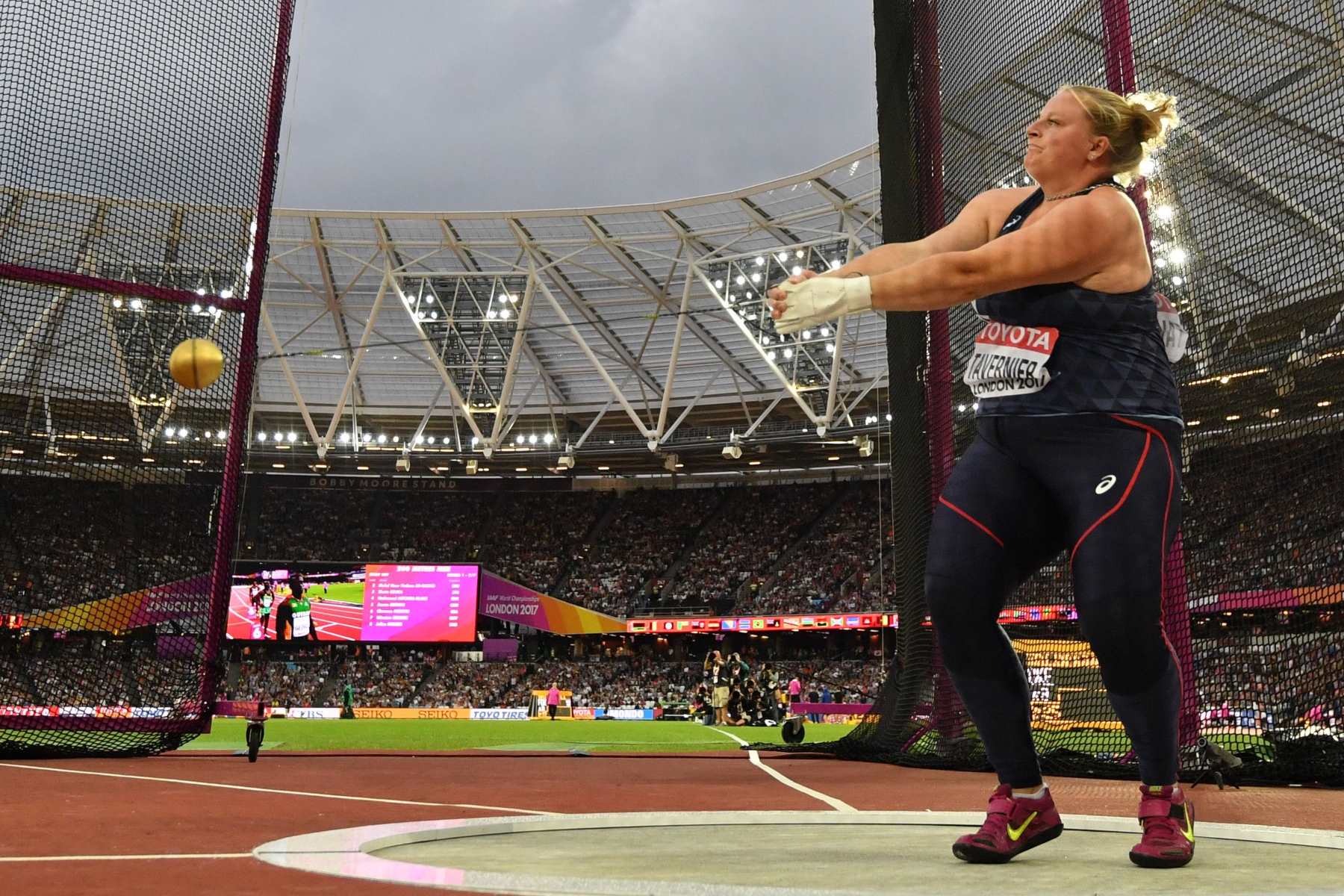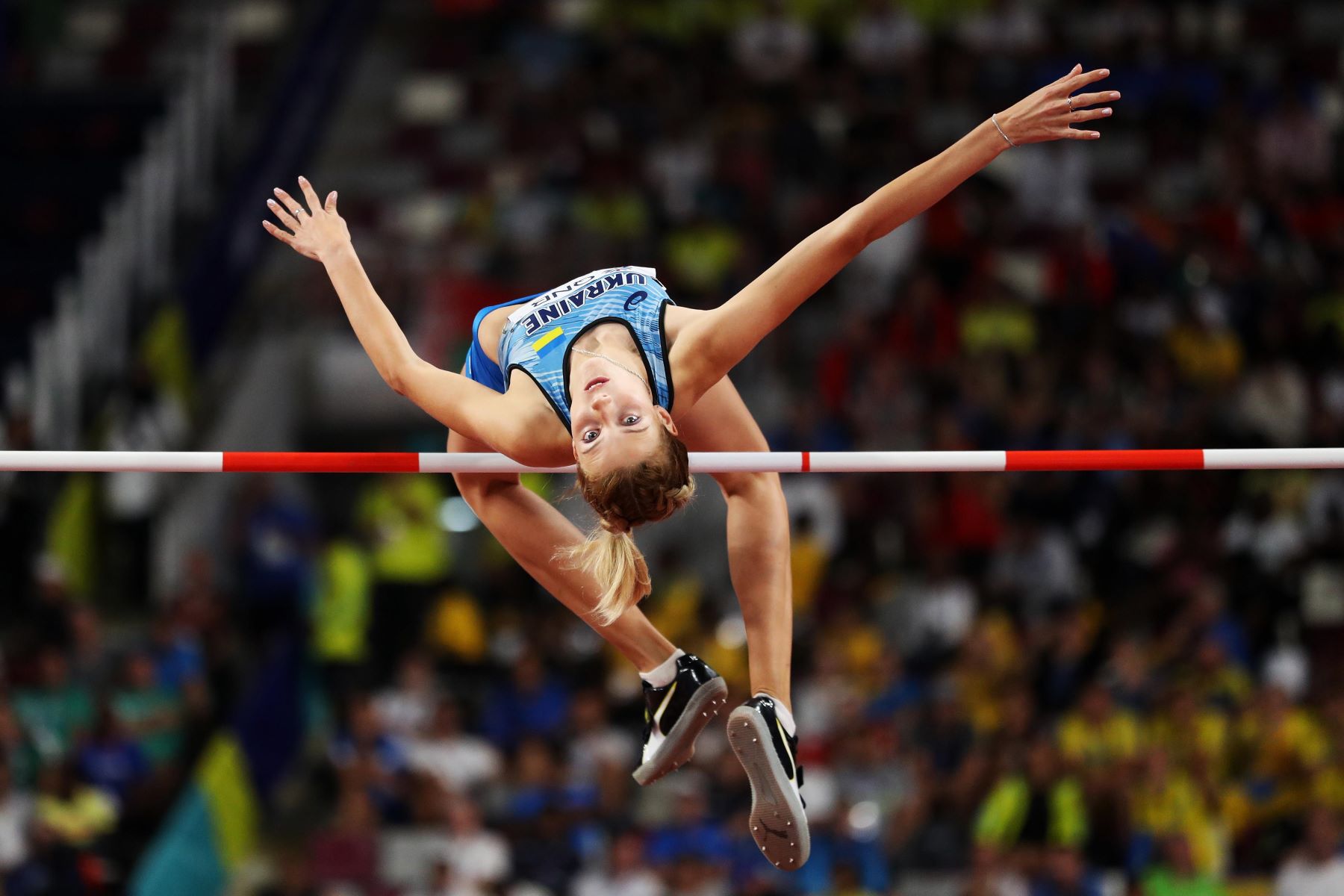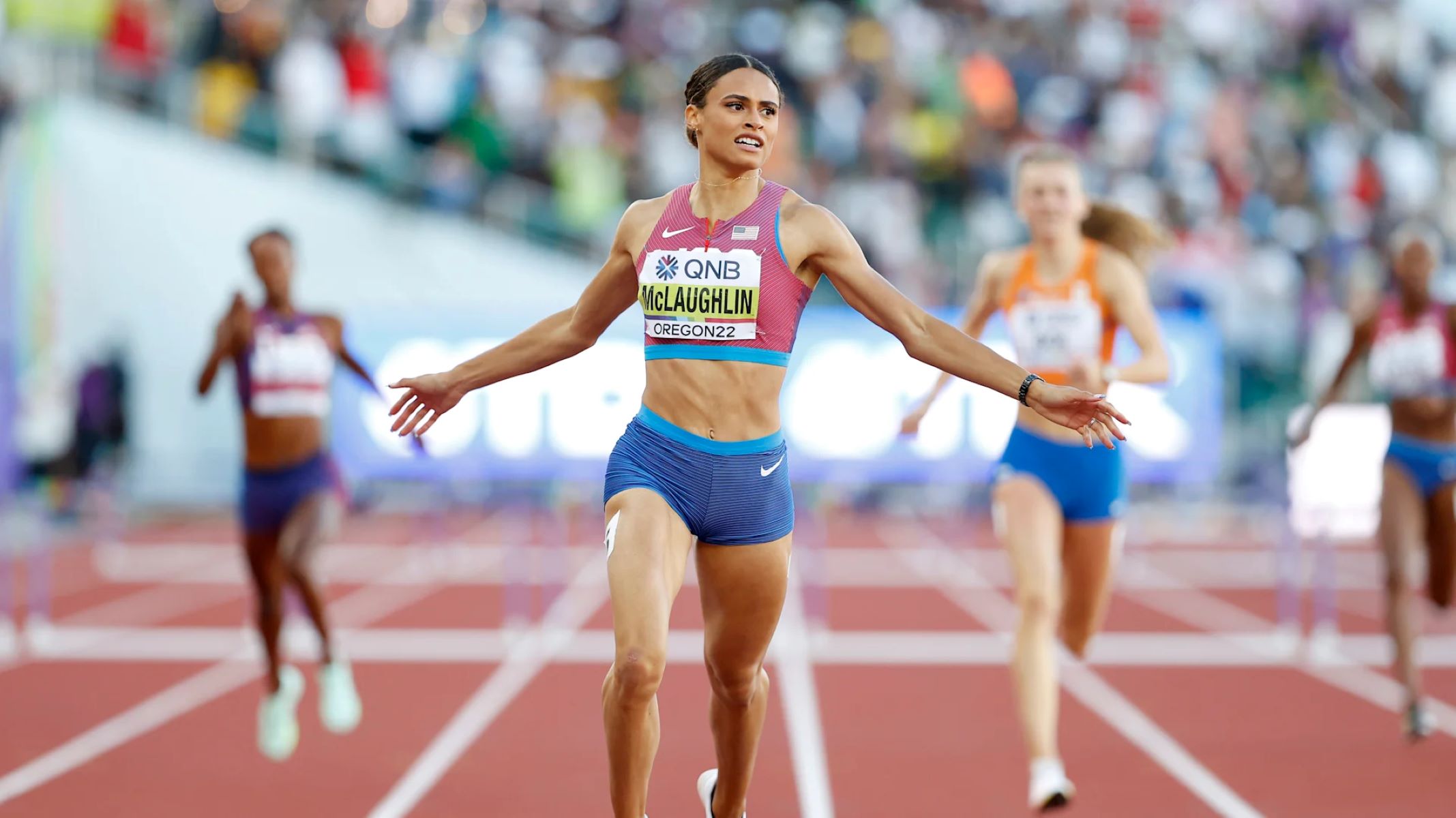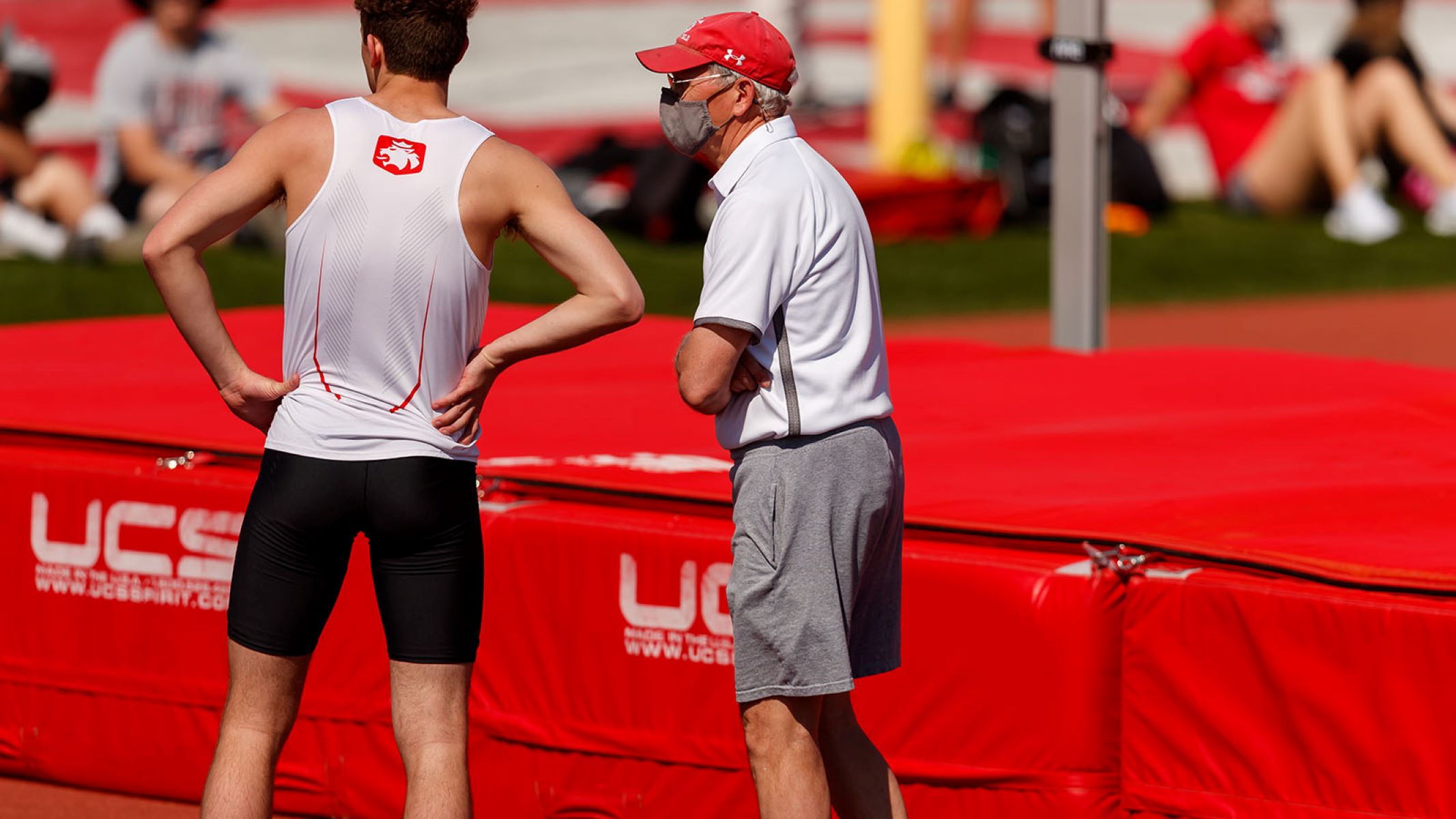

Featured
How Old To Do Masters Track And Field
Modified: May 22, 2024
Featured: Discover the age requirement to participate in Masters Track and Field and pursue your athletic goals. Find out if you're eligible to compete in this exciting sporting category.
Introduction
Welcome to the exciting world of Masters Track and Field! Whether you have been a lifelong athlete or are looking for a new challenge later in life, Masters Track and Field provides a unique and thrilling opportunity to compete and excel in athletic events. Unlike traditional track and field, Masters Track and Field is specifically designed for athletes who are over a certain age. This age limit varies depending on the governing body, but generally starts at 30 or 35 years old.
Participating in Masters Track and Field offers a myriad of benefits. Not only does it allow you to stay active and maintain a healthy lifestyle, but it also fosters a sense of camaraderie and community among fellow athletes. Additionally, Masters Track and Field events are a fantastic way to set personal goals, challenge yourself, and achieve a sense of accomplishment. Whether you are a sprinter, jumper, or distance runner, there are events available to suit your specific interests and abilities.
Before diving into the world of Masters Track and Field, it’s important to understand the age requirements set by the governing bodies. While the general starting age is around 30 or 35, there are different age categories within Masters Track and Field. These categories are typically grouped in five-year increments, allowing for fair competition among athletes of similar age and ability. This ensures that everyone has the opportunity to compete against their peers in a supportive and equitable environment.
Participating in Masters Track and Field requires proper training and preparation. Just like any athletic endeavor, it is important to engage in regular physical activity, incorporate strength training, and follow a balanced diet to optimize performance. Working with a qualified coach or trainer can provide valuable guidance and help tailor a training program that suits your specific goals and abilities. Additionally, it’s crucial to listen to your body, rest when necessary, and prioritize injury prevention methods such as stretching and warm-up exercises.
There is a wide range of events available in Masters Track and Field, catering to different athletic disciplines and skill sets. Sprinting events such as the 100-meter dash and 200-meter dash showcase explosive speed, while longer distance races like the 5,000 meters or 10,000 meters test endurance and stamina. Field events such as long jump, high jump, and shot put allow athletes to showcase their power and technique. There are also relay races and multi-event competitions like the decathlon or heptathlon that challenge athletes across multiple disciplines.
While Masters Track and Field offers numerous benefits and exciting opportunities, it is important to acknowledge the challenges and limitations that come with competing at an older age. The body naturally undergoes changes as we age, and it’s essential to be mindful of these limitations and take appropriate precautions. It is crucial to engage in proper warm-up and cool-down routines, stretch adequately, and listen to your body to prevent injuries. Seeking guidance from healthcare professionals can also help ensure safe participation in Masters Track and Field and minimize any potential risks.
So, whether you are looking to reignite your competitive spirit, stay in shape, or simply make new connections with fellow athletes, Masters Track and Field offers a wealth of opportunities. In the following sections, we will delve into the age requirements, benefits, training techniques, popular events, and challenges that come with participating in Masters Track and Field. Get ready to embark on an exhilarating athletic journey and make your mark in the world of Masters Track and Field!
Age Requirements for Masters Track and Field
Participating in Masters Track and Field comes with specific age requirements. While the exact age limit may vary depending on the governing body, the general eligibility for Masters Track and Field starts around 30 or 35 years old. This age requirement ensures that athletes are of a certain age to be considered “masters” and compete in events specifically designed for older athletes.
Within the realm of Masters Track and Field, age categories are typically divided into five-year increments, allowing athletes to compete against others in their age group. This ensures fair and equitable competition, as participants are grouped with others who have similar abilities and physical attributes. Age categories provide a level playing field and enhance the overall experience for athletes, as they can gauge their performance against their peers.
For example, categories such as M35 (men 35 years and older) and W40 (women 40 years and older) are common age divisions within Masters Track and Field. As athletes progress in age, they move into different categories such as M40, M45, M50, and so on. These age divisions allow athletes to continue participating and challenging themselves as they get older, promoting lifelong engagement in the sport.
It’s important to note that the age requirements and categories may vary slightly between different countries or governing bodies. It’s advisable for athletes to familiarize themselves with the specific regulations and guidelines set by the respective governing body in their region. This will ensure accurate knowledge of the age requirements and help them determine the category they are eligible to participate in.
One of the advantages of Masters Track and Field’s age requirements is the opportunity for athletes to continue their athletic pursuits beyond their youth. It allows individuals who may not have discovered their passion for running, jumping, or throwing events until later in life to compete and enjoy the sport. The age requirements also foster a supportive and empowering environment, where athletes can bond with others who are in a similar stage of life and share their love for the sport.
Furthermore, Masters Track and Field events provide inspiring role models and proof that age is not a barrier to achieving athletic success. Athletes in their 40s, 50s, and beyond continue to set records and achieve remarkable performances, demonstrating that passion, dedication, and perseverance can defy age-related limitations.
So, if you’re in your 30s, 40s, 50s, or beyond, and still have the fire and desire to compete in track and field events, Masters Track and Field is the perfect avenue to pursue your passion and athletic goals. The age requirements ensure fair and exciting competition within your age group, allowing you to push your limits, make new friends, and experience the thrill of athletic achievement. Let’s explore the incredible benefits awaiting you in Masters Track and Field.
Benefits of Participating in Masters Track and Field
Participating in Masters Track and Field offers a multitude of benefits that extend beyond physical fitness. Whether you are a seasoned athlete or new to the sport, engaging in track and field events at a masters level can enhance both your physical and mental well-being. Let’s explore some of the key benefits of participating in Masters Track and Field.
1. Health and Fitness: Masters Track and Field is a fantastic way to stay active and maintain a healthy lifestyle. Regular training and participation in track and field events help improve cardiovascular fitness, muscular strength, and flexibility. Engaging in physical activity can also help manage weight, reduce the risk of chronic diseases, and promote overall well-being.
2. Personal Goal Setting: Masters Track and Field provides the opportunity to set personal goals and work towards achieving them. Whether it’s improving your personal best time in a sprint, reaching a certain distance in a throwing event, or aiming to jump higher or farther, track and field events allow you to focus on specific goals and strive for continuous improvement.
3. Camaraderie and Community: Participating in Masters Track and Field allows you to connect with like-minded individuals who share your passion for athletics. The track and field community is known for its supportive and inclusive nature, providing a sense of camaraderie and belonging. You’ll make new friends, collaborate with fellow athletes, and cheer each other on to success.
4. Mental Resilience: Engaging in Masters Track and Field requires mental toughness and discipline. In addition to physical training, athletes must develop mental resilience to overcome challenges, push through barriers, and perform at their best. The process of training and competing in track and field events enhances focus, determination, and resilience, which can have a positive impact on various aspects of life.
5. Lifelong Learning: Masters Track and Field provides numerous opportunities for learning and personal growth. You’ll gain knowledge about proper training techniques, biomechanics, nutrition, injury prevention, and more. You’ll also learn from experienced coaches, athletes, and professionals in the field, allowing you to continuously expand your understanding of athletics.
6. Sense of Achievement: Participating in Masters Track and Field events offers a tremendous sense of achievement and fulfillment. Completing a race, achieving a personal best, or earning a medal in your age category provides a tangible recognition of your hard work, dedication, and progress. These accomplishments boost self-confidence and create a lasting sense of pride.
7. Positive Aging: Masters Track and Field is a testament to the idea that age is just a number. Engaging in regular physical activity, setting goals, and achieving personal bests can promote positive aging. It challenges the notion that physical decline is inevitable with age and showcases the potential for ongoing growth and performance.
8. Inspiration and Role Modeling: Masters Track and Field events inspire individuals of all ages by showcasing the remarkable achievements of older athletes. Witnessing athletes in their 40s, 50s, and beyond break records, achieve exceptional performances, and defy expectations serves as inspiration to push boundaries and strive for greatness at any age.
By participating in Masters Track and Field, you’ll not only experience the joy of athletic competition but also reap the various physical, mental, and social benefits. It’s time to lace up your running shoes, step onto the track, and embark on an incredible journey of personal growth, achievement, and camaraderie. Let’s explore the training and preparation required for success in Masters Track and Field.
Training and Preparation for Masters Track and Field
To excel in Masters Track and Field, proper training and preparation are essential. Whether you are a seasoned athlete or new to the sport, a well-structured training program will help you maximize your performance and minimize the risk of injury. Let’s explore some key aspects of training and preparation for Masters Track and Field.
1. Individualized Training: Every athlete is unique, and it’s important to tailor your training program to your specific needs and goals. Consulting with a qualified coach or trainer can provide valuable guidance in determining the right training methods, volume, and intensity. They can also help identify any weaknesses or areas that require improvement and design targeted exercises to address them.
2. Balancing Cardiovascular and Strength Training: Masters Track and Field requires a combination of cardiovascular endurance and muscular strength. Incorporating a mix of aerobic exercises such as running, swimming, or cycling will improve cardiovascular fitness. Strength training exercises like weightlifting, bodyweight exercises, and resistance training will enhance muscular strength and power necessary for sprinting, jumping, and throwing events.
3. Warm-up and Cool-down: Prior to engaging in any track and field activities, it’s crucial to warm up properly. This can include dynamic stretching, light jogging, and mobility exercises to increase blood flow and prepare the muscles for activity. Similarly, a thorough cool-down involving static stretching and gentle exercises helps reduce muscle soreness and prevent post-activity stiffness.
4. Injury Prevention: As we age, it becomes even more important to prioritize injury prevention methods in our training regimen. This includes incorporating flexibility exercises, balance training, and engaging in proper form and technique for all track and field events. Pay attention to your body’s signals, rest when needed, and address any aches or pains promptly to prevent long-term injuries.
5. Nutritional Considerations: Proper nutrition plays a vital role in supporting your training and recovery. Fuel your body with a balanced diet that includes a variety of fruits, vegetables, lean proteins, whole grains, and healthy fats. Stay hydrated throughout the day and especially during training sessions or competitions. Consult a sports nutritionist if needed to optimize your diet and fuel your performance.
6. Mental Preparation: Masters Track and Field not only requires physical prowess but also mental resilience. Visualize your success, set achievable goals, and cultivate a positive mindset to overcome challenges. Practice relaxation techniques, such as meditation or deep breathing exercises, to stay focused and calm during competitions. Surrounding yourself with supportive teammates or training partners can also contribute to a positive and motivating training environment.
7. Rest and Recovery: Adequate rest and recovery are crucial for optimizing performance and preventing overuse injuries. Make sure to incorporate rest days into your training schedule, allowing your body to recover and adapt to the training load. Get enough sleep to support muscle repair and growth, as well as mental rejuvenation.
8. Regular Fitness Assessments: Monitoring your progress is important to track improvements, adjust training methods, and set new goals. Regularly assess your fitness level through tests and measurements such as timed sprints, jump height, or throwing distances. This data will help you identify areas of improvement and celebrate milestones along your Masters Track and Field journey.
By following a well-rounded training program, addressing injury prevention, and prioritizing proper nutrition and rest, you will be well-prepared to excel in Masters Track and Field. Now that we’ve covered the training and preparation, let’s explore the various events you can participate in as a Masters Track and Field athlete.
Common Events in Masters Track and Field
Masters Track and Field offers a wide array of events that cater to athletes with different strengths, skills, and interests. Whether you excel in sprinting, jumping, throwing, or endurance, there is an event for you. Let’s explore some of the common events in Masters Track and Field.
Sprinting Events: The sprinting events in Masters Track and Field are thrilling and showcase explosive speed. The most common sprinting distances include the 100-meter dash, 200-meter dash, and 400-meter dash. These events require athletes to generate maximum power and speed over short distances, challenging their agility and acceleration. Masters sprinters captivate audiences with their lightning-quick starts and fierce finishes.
Long Distance Events: For those with exceptional endurance, long distance events are a perfect fit. These events test an athlete’s ability to maintain a consistent pace over extended distances. Common long distance events in Masters Track and Field include the 5,000 meters, 10,000 meters, and even marathon races. Endurance runners demonstrate mental fortitude and stamina as they push their limits and conquer long distances.
Hurdles: Hurdles events add an extra level of challenge and excitement to track and field competitions. Athletes must navigate a series of evenly spaced hurdles while maintaining speed and rhythm. The most common hurdles events in Masters Track and Field include the 100-meter hurdles and 400-meter hurdles. Masters hurdlers mesmerize spectators with their agility, technique, and ability to clear obstacles with precision.
Jumping Events: Masters Track and Field showcases various jumping events, including the long jump, high jump, and triple jump. These events require athletes to combine strength, technique, and coordination to achieve maximum distance or height. Masters jumpers exhibit remarkable power and grace as they soar through the air, aiming to set new personal records.
Throwing Events: Throwing events in Masters Track and Field highlight strength, technique, and precision. Shot put, discus throw, javelin throw, and hammer throw are among the popular throwing events. Masters throwers display impressive power and control as they launch their implements with remarkable force and accuracy.
Relay Races: Relay races are exciting team events in Masters Track and Field. Athletes pass a baton from one teammate to another in a coordinated effort to complete the race in the fastest time possible. Common relay events include the 4×100 meters and 4×400 meters relay. Masters relay teams exhibit exceptional teamwork, speed, and seamless baton exchanges, creating a thrilling and highly competitive atmosphere.
Multi-Event Competitions: Multi-event competitions in Masters Track and Field challenge athletes across different disciplines. The decathlon for men and the heptathlon for women are comprehensive tests of an athlete’s versatility and all-around skill. These events include a combination of sprints, jumps, throws, and middle-distance races, providing a true measure of an athlete’s capabilities across various track and field events.
Participating in these diverse events allows athletes to showcase their unique talents and abilities. Whether you are a sprinter, jumper, thrower, or endurance runner, there is an event that aligns with your strengths and interests in Masters Track and Field. So, lace up your shoes, practice your technique, and get ready to compete in the exhilarating world of Masters Track and Field.
Challenges and Limitations in Masters Track and Field
Masters Track and Field presents a unique set of challenges and limitations that athletes need to be aware of as they compete at an older age. While participating in Masters Track and Field offers numerous benefits, it’s important to acknowledge and navigate these challenges to ensure a safe and enjoyable experience. Let’s explore some of the common challenges and limitations in Masters Track and Field.
1. Age-Related Changes: As we age, our bodies naturally undergo physiological changes that can affect performance in track and field events. Reduction in muscle mass, decline in cardiovascular capacity, decreased flexibility, and slower recovery times are some of the age-related factors that may impact an athlete’s abilities. It’s important to be mindful of these changes and adapt training methods accordingly.
2. Risk of Injuries: The risk of injuries increases with age, and Masters Track and Field athletes are not exempt from this. The repetitive nature of certain movements, such as running and jumping, places stress on joints, tendons, and muscles. It’s essential to engage in proper warm-up and cool-down routines, incorporate strength and flexibility exercises, and listen to your body to prevent overuse injuries. Consulting with healthcare professionals can provide valuable guidance on injury prevention strategies.
3. Longer Recovery Times: Older athletes may experience longer recovery times after intense training sessions or competitions. It’s important to prioritize rest and recovery to allow the body to repair and rejuvenate. Adequate sleep, proper nutrition, and active recovery methods, such as stretching or low-impact exercises, can facilitate the recovery process and reduce the risk of overtraining or burnout.
4. Psychological Factors: Masters Track and Field athletes may face psychological challenges such as performance anxiety, self-doubt, or difficulty in managing expectations. It’s important to cultivate a positive mindset, set realistic goals, and practice mental techniques such as visualization and positive self-talk. Seeking support from coaches, fellow athletes, or sports psychologists can be beneficial in managing these psychological factors.
5. Balancing Training and Lifestyle: As adults with various responsibilities and commitments, it may be challenging to balance training for Masters Track and Field with other aspects of life. Careers, family responsibilities, and other obligations may limit the time and energy available for training. Effective time management and prioritization become crucial to strike a balance between training, personal life, and recovery.
6. Limited Access to Facilities and Coaches: Depending on one’s location and resources, access to top-notch training facilities and specialized coaches may be limited for Masters Track and Field athletes. Finding suitable training venues, equipment, and qualified coaches can be challenging. However, with creativity and resourcefulness, athletes can still find ways to optimize their training, seek guidance through online resources and virtual coaching, or join local Masters Track and Field clubs for support.
7. Managing Expectations: It’s important for Masters Track and Field athletes to manage their expectations and embrace the realities of aging. Accepting that performance may change with age and adjusting goals accordingly can help maintain a positive mindset and keep the focus on personal growth and enjoyment of the sport. Remember that each individual’s journey in Masters Track and Field is unique, and progress should be celebrated regardless of age.
By recognizing and addressing these challenges and limitations, Masters Track and Field athletes can navigate their athletic journeys with resilience, adaptability, and a focus on overall well-being. Despite these challenges, Masters Track and Field offers a platform for personal growth, camaraderie, and continued athletic engagement. Let’s reflect on the incredible journey of Masters Track and Field and the multitude of benefits it brings to athletes of all ages.
Conclusion
Participating in Masters Track and Field provides a unique and fulfilling experience for athletes of all ages. From sprinting to jumping, throwing to endurance running, there are events to suit every interest and ability. Masters Track and Field offers numerous benefits, including improved physical fitness, personal goal setting, camaraderie, mental resilience, and opportunities for lifelong learning.
While there are challenges and limitations that come with competing at an older age, such as age-related changes, increased risk of injuries, and managing expectations, with proper training, preparation, and a positive mindset, athletes can overcome obstacles and thrive in their chosen events.
The age divisions in Masters Track and Field ensure fair and equitable competition, allowing athletes to compete alongside others in their age group. This creates a supportive and inclusive environment where athletes can bond with fellow competitors and celebrate achievements together.
Whether you are a seasoned athlete or considering Masters Track and Field as a new endeavor, it’s important to approach training, nutrition, and rest with careful consideration. Working with coaches, seeking professional guidance, and surrounding yourself with a supportive community can enhance your experience and help you reach your goals.
Masters Track and Field showcases that age is not a barrier to athletic success. Athletes in their 30s, 40s, 50s, and beyond continue to achieve remarkable performances, inspiring others to challenge themselves and explore their athletic potential regardless of age.
Embrace the opportunities that Masters Track and Field offers. Set personal goals, challenge your limits, and relish the joy of competition. Engage in proper training, listen to your body, and prioritize self-care to maintain good health and prevent injuries.
Now it’s time to step onto the track, leap into the air, or propel objects into the distance. Masters Track and Field awaits you with its camaraderie, personal growth, and the thrill of athletic achievement. Lace up your shoes, embrace the challenges, and embark on an exhilarating journey in Masters Track and Field!
